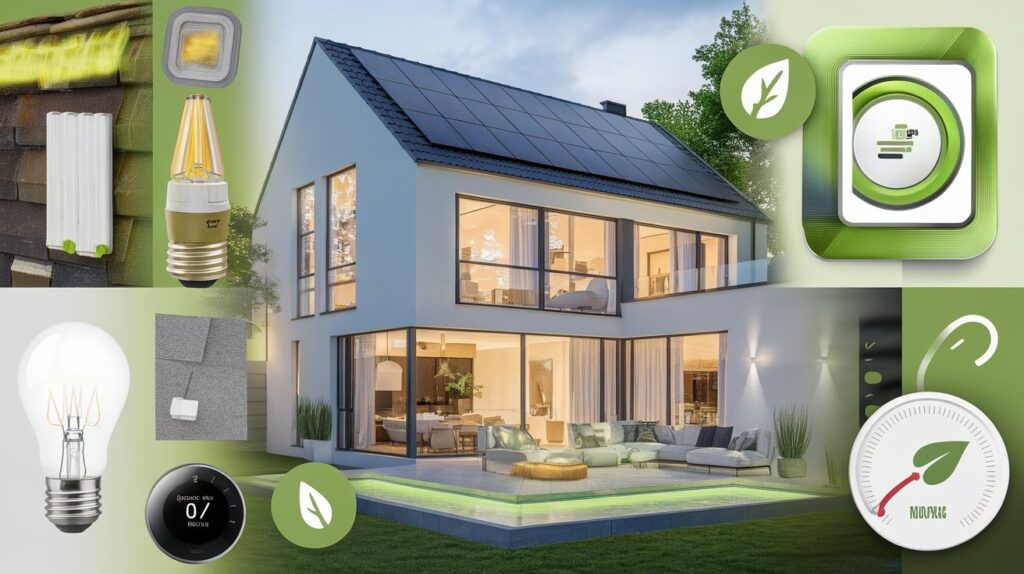Energy costs are rising, and many homeowners are starting to feel the squeeze. What’s worse is that a surprising amount of that energy-and money-is often wasted without anyone noticing.
From drafty windows to outdated appliances, energy inefficiency can creep in from unexpected places. But the good news is, you don’t need to overhaul your entire home to start seeing improvements. Just a few well-targeted changes can make a noticeable impact on your utility bills and your carbon footprint.
Let’s look at seven practical ways to tighten up your home and stop wasting energy.
1. Upgrade Your Insulation and Windows
One of the biggest culprits for energy waste? Poor insulation.
If your home isn’t properly insulated, heating and cooling systems have to work much harder to maintain a comfortable temperature. That means more energy used-and more money spent. Walls, attics, and basements should all be checked for proper insulation levels, especially in older homes.
Windows can be just as leaky. Double or triple-pane windows are more efficient than single-pane ones and can help reduce heat loss. Sealing gaps around frames with weather stripping or caulk is a low-cost fix that can make a big difference.
For those considering long-term upgrades, installing solar panels can further offset your energy usage by generating power right at home. It won’t directly fix insulation problems, but pairing solar with energy efficiency improvements can drastically reduce overall consumption.
2. Switch to Energy Efficient Lighting
If you’re still using traditional incandescent bulbs, you’re burning through more energy than necessary.
LED bulbs use up to 90% less energy and last up to 25 times longer than incandescents. Swapping out bulbs in high-use areas-like kitchens, bathrooms, and hallways-is an easy win.
Smart lighting systems can help even more. They allow you to schedule or automate lighting so you’re never powering empty rooms. Plus, they’re a simple way to modernize your home while lowering your energy bills.
3. Seal and Maintain HVAC Ducts
Your heating and cooling system might be doing a great job-but if the air it produces is leaking into crawlspaces or attics, you’re still losing out.
Duct leaks can account for 20-30% of a system’s energy consumption. Sealing those leaks with mastic or foil-backed tape helps ensure that conditioned air gets where it’s supposed to go.
Regular HVAC maintenance is also key. Change filters every 1-3 months and schedule professional inspections annually to keep systems running efficiently.
4. Install a Smart Thermostat
Heating and cooling make up a large chunk of most utility bills. One of the easiest ways to gain control over that cost is with a smart thermostat.
These devices learn your schedule and adjust the temperature automatically. Some can even detect when you’ve left the house and dial things back to save energy.
Turning your thermostat back even a bit for 8 hours a day can help you save on heating and cooling. Smart thermostats make that adjustment effortless.
5. Replace Outdated Appliances
That old fridge in the garage might still work-but it’s likely an energy hog.
Appliances over a decade old typically use far more energy than new Energy Star-rated models. Refrigerators, dishwashers, washers, and dryers are common offenders.
When it’s time to replace, look for the Energy Star label, which certifies that the appliance meets strict efficiency guidelines. Though new models require an upfront investment, they often pay for themselves through energy savings over time.
6. Control Phantom Loads
Even when turned off, many devices continue to draw small amounts of power. These “phantom loads” may seem minor, but they add up-especially when multiplied across dozens of devices.
Televisions, game consoles, microwaves, and chargers are all common culprits.
Smart power strips are a great solution. They automatically cut power to devices that aren’t in use, which helps eliminate waste without requiring you to unplug things constantly.
7. Use Water Heating More Efficiently
Water heating is often the second-largest energy expense in a home, after HVAC systems.
Lowering your water heater’s temperature to 120°F can save energy without sacrificing comfort. Installing low-flow showerheads and faucet aerators can reduce hot water usage significantly.
If your water heater is more than 10 years old, consider upgrading to a high-efficiency model-or even a tankless system, which heats water on demand and avoids standby losses altogether.
A Smarter, Leaner Home Starts Here
Making your home more energy efficient doesn’t require a full renovation. Often, the biggest improvements come from fixing small but persistent inefficiencies-drafts, outdated equipment, forgotten settings, and simple oversights.
These tweaks not only reduce your energy use and utility bills but also improve the comfort and usability of your living space. They’re the kind of upgrades that benefit your wallet in the short term and your home’s value in the long run.
The key is to act intentionally. Do an audit, make a plan, and chip away at it one upgrade at a time. Your home-and your energy bill-will thank you.

